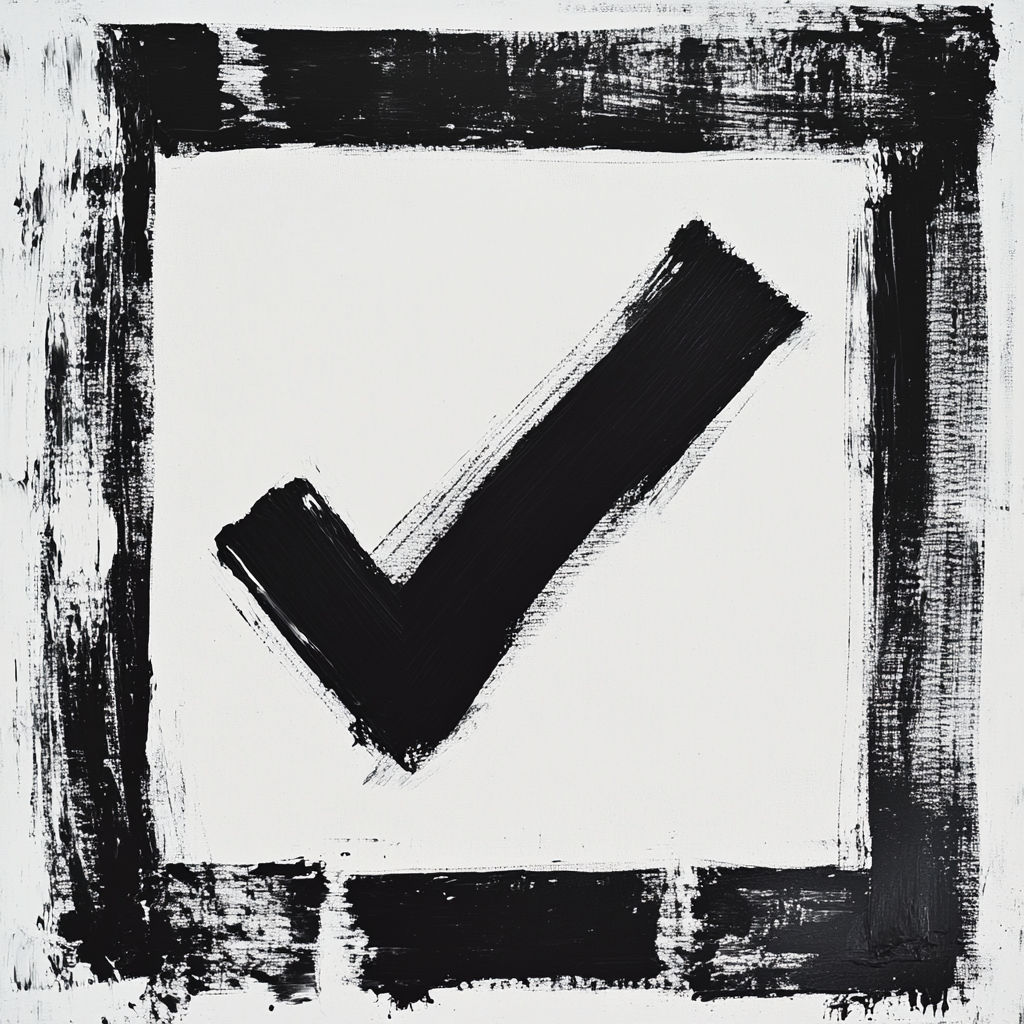Introduction to Antique Button Collecting
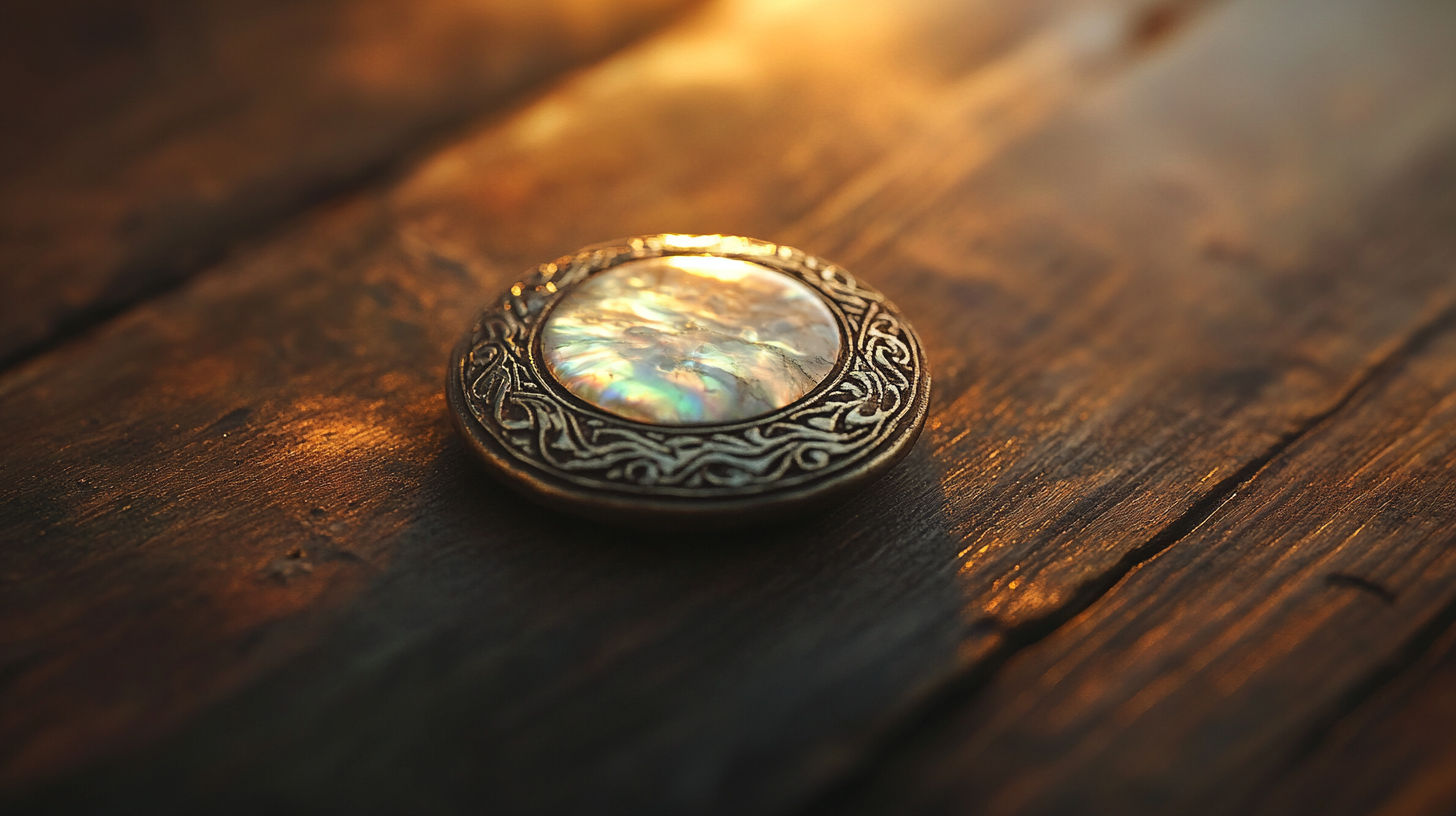
Antique and vintage buttons can range in value from mere cents to thousands of dollars, depending on factors like age, rarity, material, craftsmanship, and condition. While the majority of old buttons sell for under $50, rare specimens can fetch impressive prices at auction houses and among serious collectors.
Button collecting, known as “buttonology,” has gained popularity as enthusiasts appreciate these miniature works of art. Whether you’re a novice collector, inherited a button collection, or simply curious about the value of old buttons you’ve discovered, this guide will help you understand what makes certain buttons valuable and how to identify potential treasures.
Old Button Collecting Facts
Types of Antique Buttons by Material
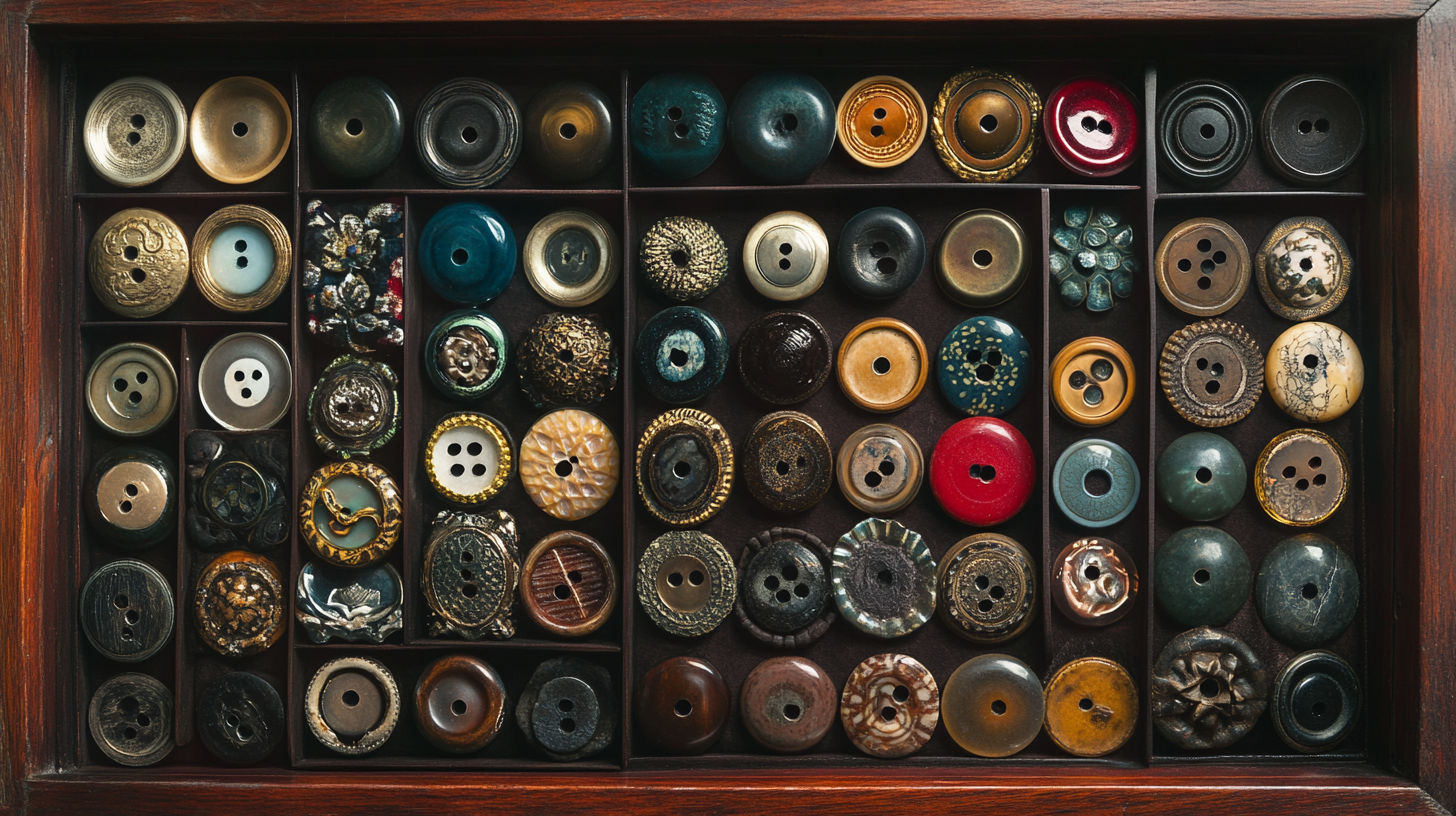
Metal Buttons
Metal buttons have been produced for centuries and can be made from brass, copper, steel, pewter, silver, and gold. Military buttons, especially those from significant historical periods or notable regiments, are among the most valuable.
To identify antique metal buttons, examine the back side. If the shank (the loop on the back) is a twisted wire embedded in the metal, it was likely manufactured before 1918 and qualifies as an antique button.
Mother of Pearl and Shell Buttons
Buttons made from mother of pearl (MOP) or various shells are highly sought after. These natural material buttons reflect iridescent colors and were often hand-carved with intricate designs. Look for:
- Pearl buttons with carved or pierced patterns
- Abalone shell with vibrant blue and green hues
- Pearl buttons with painted or gilded accents
Many of the most valuable pearl buttons come from the mid-1800s to early 1900s.
Porcelain and Ceramic Buttons
Porcelain buttons, particularly hand-painted examples from the late 19th century, can be quite valuable. These include:
- Satsuma buttons from Japan featuring intricate painted designs
- Limoges buttons from France with detailed painting on fine porcelain
- Transfer-printed designs depicting scenes or portraits
The most valuable porcelain buttons typically feature hand-painting, gilding, or unique decorative techniques.
Glass Buttons
Glass buttons come in numerous varieties, with the most valuable typically being:
- Paperweight buttons with millefiori designs (multicolored glass patterns)
- Black glass buttons with molded designs or facets
- Gilt or painted overlay on colored glass
- Realistic glass buttons imitating other materials
Many collectible glass buttons were produced in Bohemia (now part of the Czech Republic) in the late 1800s.
Celluloid and Early Plastic Buttons
As the first synthetic plastic, celluloid buttons (from the 1870s to 1930s) have historical significance. Valuable examples include:
- Realistic imitations of tortoiseshell, ivory, or pearl
- Buttons with molded or carved three-dimensional designs
- Art Deco and Art Nouveau style celluloid buttons
- Buttons with painted or inlaid designs
Early Bakelite buttons from the 1920s-1940s have also become highly collectible.
Fabric and Textile Buttons
Fabric-covered buttons and those made entirely of textile materials can be valuable, particularly:
- Passementerie buttons (made with elaborate thread work)
- Buttons with petit point or micro-embroidery
- Woven silk or metallic thread buttons
- Buttons incorporating beadwork or sequins
These buttons are sometimes quite fragile, so excellent condition significantly increases value.
Value Ranges by Button Material
| Category | Price Range | Notes |
|---|---|---|
| Metal (Military or Historic) | $20 - $300+ | Higher value for documented provenance |
| Mother of Pearl/Shell (Carved) | $15 - $100 | Intricate designs command premium prices |
| Porcelain (Hand-painted) | $25 - $150 | Japanese Satsuma or French Limoges highest valued |
| Glass (Paperweight/Millefiori) | $20 - $75 | Bohemian examples particularly desirable |
| Ivory or Tagua Nut | $20 - $150 | Legal antique ivory requires documentation |
| Celluloid/Early Plastic | $10 - $50 | Realistic imitations most valuable |
| Picture or Story Buttons | $15 - $200 | Complete sets can fetch much higher prices |
Note: Price ranges are approximate and can vary based on condition, rarity, and market demand.
Factors That Determine Button Value
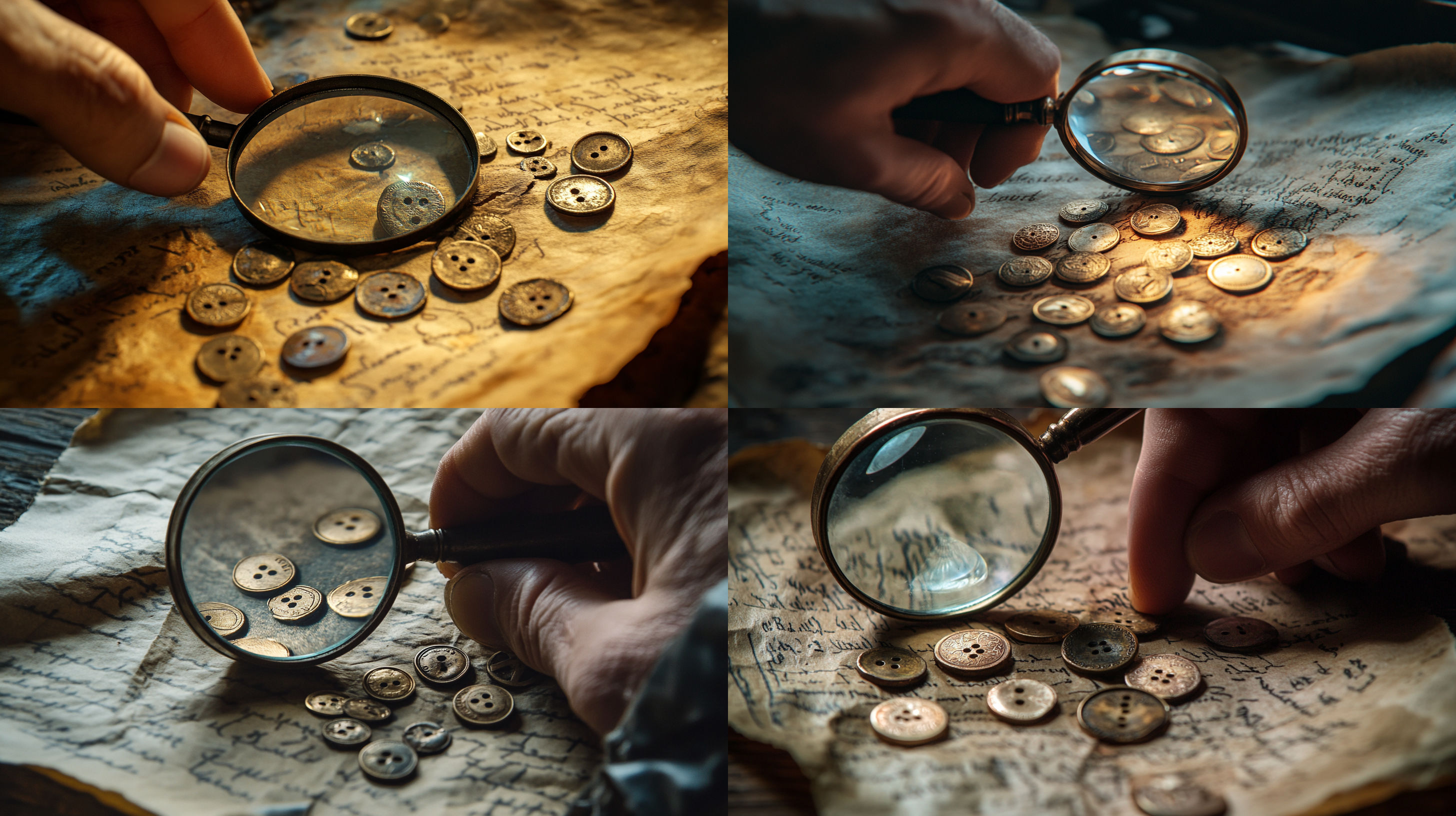
Age and Rarity
Generally, the older the button, the more valuable it may be—particularly if it represents an early manufacturing technique or historical period. Buttons from the 18th and early 19th centuries are typically more valuable than those from the late 19th or early 20th centuries due to their comparative rarity.
Buttons with limited production runs or from short-lived factories often command higher prices. For example, buttons from Prosser’s Aetna Button Works (1841-1852) are highly sought after by collectors.
Design and Artistic Merit
Buttons featuring exceptional artistry, craftsmanship, or innovative design tend to be more valuable. Look for:
- Intricate miniature scenes
- Unusual or complex manufacturing techniques
- Buttons signed by known artists or designers
- Buttons reflecting important art movements (Art Nouveau, Art Deco)
Historical Significance
Buttons connected to significant historical events, notable figures, or important social movements can carry premium values:
- Buttons from military uniforms of important conflicts
- Political campaign buttons from the 19th century
- Buttons featuring emerging technologies of their era
- Commemorative buttons for historical events
Condition
As with most collectibles, condition significantly impacts value. Buttons in mint or near-mint condition are worth substantially more than damaged examples. Issues that diminish value include:
- Chips, cracks, or significant wear
- Fading or color loss
- Bent or damaged shanks
- Corrosion or tarnishing
Provenance and Documentation
Buttons with documented history or provenance typically command higher prices:
- Known origin from a specific maker or region
- Original button cards or packaging
- Documentation of previous ownership
- Connection to noteworthy collections
Button Value Assessment Checklist
Most Valuable Types of Antique Buttons
Picture Buttons
Picture buttons (also called “story buttons”) from the late 19th century feature detailed scenes, often illustrating literary works, fables, or historical events. Made primarily in France and England, these pressed brass buttons with pictorial designs are highly collectible.
Complete themed sets of picture buttons can sell for hundreds or even thousands of dollars, while individual examples typically range from $15-$50 each.
Black Glass with Gold or Silver Decoration
Black glass buttons with inlaid or painted gold or silver designs, particularly those from the Victorian era, are highly desirable. These buttons featured intricate patterns, often with star motifs or floral designs. Good examples can sell for $30-$100 each.
Enamel and Precious Metal Buttons
Buttons combining precious metals (gold or silver) with enamel work represent some of the highest-value antique buttons. These include:
- 18th-century French enamel buttons
- Buttons with cloisonné or champlevé enamel techniques
- Buttons by notable jewelers or silversmiths
Fine examples of enamel and precious metal buttons can sell for hundreds or even thousands of dollars each. A pair of enamel and 18K gold cuff buttons recently valued around $3,900 demonstrates the upper end of this market.
Elaborately Carved Pearl Buttons
Mother of pearl buttons with exceptional carving, particularly those featuring intricate scenes, animals, or architectural elements, can be quite valuable. The finest examples from the Victorian era can sell for $50-$200 per button, with extremely rare specimens commanding even more.
Military and Uniform Buttons
Military buttons, especially those from significant historical periods or prestigious regiments, can be highly valuable to both button collectors and military memorabilia enthusiasts. Revolutionary War, Civil War, and War of 1812 military buttons are particularly prized, with some rare examples selling for hundreds of dollars each.

Realistic and Pictorial Celluloid Buttons
Although celluloid is a relatively modern material compared to other antique button types, certain celluloid buttons from the late 19th and early 20th centuries are highly collectible. The most valuable examples feature:
- Realistic imitations of natural materials
- Three-dimensional molded designs
- Painted scenes or portraits
- Art Nouveau or Art Deco styling
Outstanding examples can sell for $25-$75 each, with rare specimens commanding even more.
Historical Timeline of Button Development
Early Precious Metal Buttons
Buttons made of silver and gold, often with gemstones or enamel work. These remain among the most valuable antique buttons today.
Rise of Decorative Buttons
Industrialization allowed more complex designs. Metal buttons with pictorial designs, porcelain, and early glass buttons gain popularity.
Victorian Button Golden Age
The height of button artistry with picture buttons, black glass, and elaborate materials. Many of today's most collectible buttons date from this period.
Transition to Modern Materials
Introduction of celluloid and early plastics. Art Nouveau and later Art Deco influences appear in button design.
Bakelite and Synthetic Materials
Mass production with new synthetic materials dominates, though some high-quality decorative buttons continue to be made.
How to Identify Valuable Buttons in Your Collection
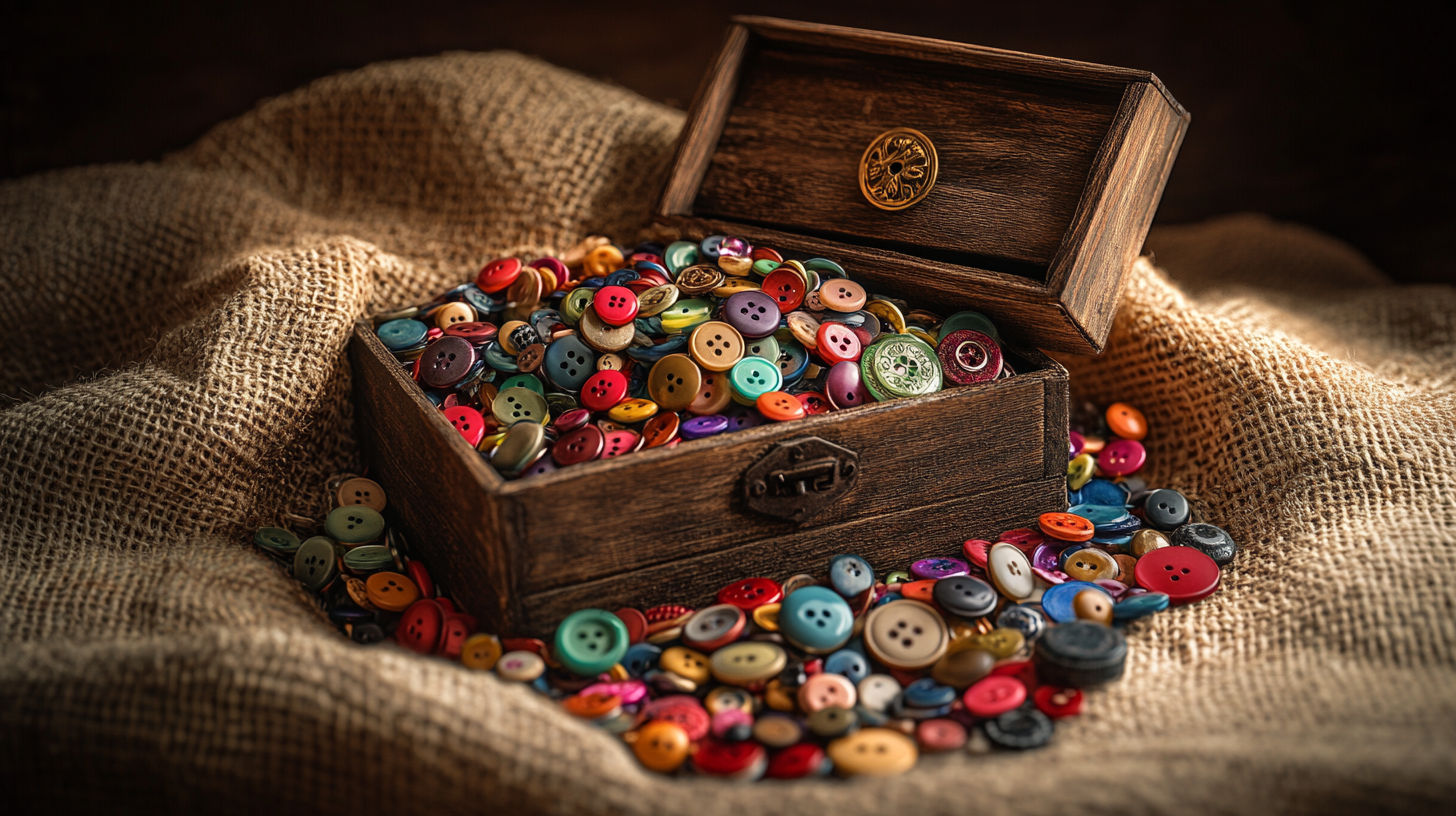
Step 1: Determine the Material
The first step in button identification is determining the material. This can sometimes be challenging, as many buttons were designed to imitate more expensive materials. Some identification tips:
- Pearl vs. Plastic: Pearl feels cool to the touch and has a distinctive iridescence that changes with lighting angles
- Metal Content: Use a magnet to test for ferrous metals
- Glass vs. Plastic: Glass feels cooler and heavier than plastic of similar size
- Porcelain vs. Glass: Porcelain has a slightly matte finish compared to glass
Step 2: Look for Markings and Signatures
Examine the back of the button carefully, using magnification if necessary:
- Maker’s Marks: Some high-quality buttons were signed or marked by their makers
- Country of Origin: “Made in…” markings (though these generally indicate post-1891 manufacture)
- Metal Content: Marks like “sterling” or “800” indicating silver content
- Patent Dates: Can help establish the earliest possible manufacture date
Step 3: Assess the Construction and Technology
The method of attachment and construction techniques can help date buttons:
- Shanks: Wire shanks embedded in metal indicate pre-1918 manufacture
- Two-Piece Construction: Examine how components are joined
- Back Patterns: The pattern on the back of metal buttons can indicate age and origin
- Manufacturing Techniques: Hand-sewn holes vs. machine-drilled, hand-painting vs. transfer printing
Step 4: Research Similar Examples
Compare your buttons to documented examples:
- Button collector reference books
- Museum collections online
- Auction house archives
- Button collector association websites and publications
Step 5: Consult Specialists
For potentially valuable buttons, consider getting expert opinions:
- Local antique appraisers
- Button collector clubs and organizations
- Specialized online forums
- Auction houses with expertise in textiles and accessories
Button Identification Resources
National Button Society
America's largest button collecting organization offering resources, publications, and annual conventions for button enthusiasts.
Button Country Reference Guide
Comprehensive guide to identifying various button types with detailed images and descriptions.
Vintage Button Guide on HobbyLark
Detailed reference for identifying antique and vintage buttons with visual examples.
WorthPoint Button Dictionary
Resource for button values, marks, and historical information with price guide access.
Where to Sell Valuable Antique Buttons
Specialized Button Dealers and Collectors
For the highest-value buttons, selling directly to specialized dealers or serious collectors will often yield the best prices. You can connect with these buyers through:
- Button collector club meetings and conventions
- Specialized antique shows
- Online button collector forums and groups
Auction Houses
For particularly rare or valuable buttons, established auction houses may be interested:
- Regional auction houses often handle button collections
- Major auction houses may be interested in museum-quality examples
- Online auction platforms specializing in antiques and collectibles
Online Marketplaces
For mid-range value buttons, online selling platforms can connect you with collectors:
- eBay remains a major marketplace for collectible buttons
- Etsy specializes in vintage and antique items
- Ruby Lane focuses on quality antiques and collectibles
Local Options
Don’t overlook local selling opportunities:
- Antique malls and shops
- Craft suppliers that cater to vintage materials
- Local collector meetups
Preparing Buttons for Sale
To maximize value when selling:
- Clean buttons appropriately (but conservatively—incorrect cleaning can damage value)
- Research and document any known history or provenance
- Group buttons logically (by material, age, or theme)
- Photograph buttons clearly, showing both front and back
- Provide accurate descriptions and measurements
Notable Button Auction Results
| Item | Price | Date | Auction House |
|---|---|---|---|
| Collection of 19th-century French picture buttons | $2,800 | March 2023 | Heritage Auctions |
| Set of six enamel and gold Victorian buttons | $3,900 | November 2022 | Sotheby's |
| Civil War Union Army officer's gilt buttons (12) | $1,200 | January 2023 | Cowan's Auctions |
| Collection of 200+ Victorian black glass buttons | $1,750 | April 2023 | eBay |
| Rare 18th-century silver and paste jewel buttons (4) | $4,200 | December 2022 | Christie's |
Note: Auction results represent past sales and may not reflect current market values. Always consult with a professional appraiser for accurate valuations.
Button Collecting as a Hobby
Getting Started with Button Collecting
New collectors often begin with a specific focus area:
- Buttons from a particular era (Victorian, Art Deco)
- Buttons of specific materials (glass, pearl, celluloid)
- Buttons with certain motifs (animals, flowers, pictorials)
- Buttons for competition cards (organized by themes)
Joining the Button Collecting Community
The button collecting community is active and welcoming to newcomers:
- The National Button Society hosts annual conventions and publishes resources
- Regional button clubs exist throughout the United States and internationally
- Online forums and social media groups connect collectors worldwide
- Button shows and sales occur regularly in many regions
Proper Storage and Display
To preserve button value and condition:
- Store in acid-free environments
- Avoid rubber bands or adhesives that can damage buttons
- Protect from extreme temperature and humidity fluctuations
- Consider archival button trays, cards, or display cases
Educational Resources
To deepen your knowledge:
- Reference books on button collecting and identification
- Museum button collections (many accessible online)
- Button collecting magazines and journals
- Workshops and presentations at button shows
Common Questions About Old Button Values
Do old buttons have any value?
Yes, antique buttons can be quite valuable. While most old buttons sell for under $50 each, rare specimens can fetch hundreds or even thousands of dollars. Buttons made of precious materials (gold, silver, fine enamel), those with exceptional artistry, and buttons with historical significance tend to be the most valuable. Military buttons, hand-painted porcelain buttons, and carved mother of pearl buttons from the 19th century are particularly sought after by collectors.
How can I identify the age of an old button?
Several clues can help determine a button's age:
- Construction method: For metal buttons, twisted wire shanks embedded in the metal typically indicate pre-1918 manufacture
- Materials: Certain materials were only used during specific time periods
- Manufacturing techniques: Hand-sewing vs. machine drilling, hand-painting vs. transfer printing
- Back patterns: The pattern on the back of metal buttons can indicate age and origin
- Markings: "Made in..." markings generally indicate post-1891 manufacture
- Patent dates or maker's marks can provide exact dating clues
For precise identification, consider consulting button collecting guides or experts at organizations like the National Button Society.
What types of old buttons are the most valuable?
The most valuable antique buttons typically include:
- Buttons made of precious metals (gold, silver) with fine enamel work
- Buttons with historical significance, especially military buttons from significant conflicts
- Hand-painted porcelain buttons, particularly French Limoges and Japanese Satsuma
- Intricately carved mother of pearl buttons
- Complete sets of Victorian-era "picture buttons" depicting literary or historical themes
- Buttons made by known jewelry houses or with artist signatures
- Extremely rare examples with documented provenance
Condition is also crucial - buttons in mint or near-mint condition command much higher prices than damaged examples.
Where can I sell valuable old buttons?
For selling valuable antique buttons, consider these options:
- Specialized button dealers who attend button shows and conventions
- Auction houses (for high-value examples)
- Online marketplaces like eBay, Etsy, and Ruby Lane
- Antique shops and malls
- Direct sales to button collectors through collector clubs and organizations
- Online button collector forums and groups
The best venue depends on the value and rarity of your buttons. For very valuable specimens, specialist dealers or auction houses might offer the best returns, while online marketplaces work well for more common collectible buttons.
Can you donate old buttons?
Yes, there are several options for donating old buttons:
- Charity shops and thrift stores often accept button donations
- Craft guilds and organizations that use vintage materials
- Schools and children's programs for art projects
- Theater costume departments
- Button museums and historical societies (for historically significant examples)
- Textile recycling programs
For valuable antique buttons, consider donating to museum collections where they can be preserved and studied. For more common buttons, craft reuse programs ensure they'll find new life in creative projects.
Are old political or campaign buttons valuable?
Yes, vintage political and campaign buttons can be quite valuable, though these typically fall into a different collecting category than clothing buttons.
Political pinback buttons from the late 19th and early 20th centuries are particularly collectible. Buttons featuring presidential candidates from before 1920 can be worth $10-$25 each in good condition, while rare examples from the earliest campaigns can sell for hundreds or even thousands of dollars.
The value depends on factors like:
- Age (generally older buttons are more valuable)
- Historical significance of the campaign
- Condition
- Rarity of the design
- Size and visual appeal
For specific valuation of political buttons, specialists in political memorabilia would be the best resource.
How should I store valuable antique buttons?
Proper storage is essential for preserving the value and condition of antique buttons:
- Use acid-free materials for all storage containers and cards
- Avoid rubber bands, tape, or adhesives that can damage buttons
- Store in a climate-controlled environment away from extreme temperature and humidity fluctuations
- Keep away from direct sunlight to prevent fading
- Consider archival button boxes with individual compartments
- For display purposes, use UV-filtering glass or acrylic
- If mounting buttons, use archival-quality thread and avoid glue
- Keep metal buttons separate to prevent tarnish transfer
Many serious collectors use specialized button trays or mount buttons on acid-free cards with documentation of their history and provenance.
Is there an app for identifying vintage buttons?
While there isn't yet a dedicated app specifically for vintage button identification, several resources can help:
- General antique identification apps like Google Lens can sometimes provide useful starting points
- Online button collector forums where you can upload images for expert feedback
- The National Button Society website offers identification resources
- Reference books with detailed photographs remain the most reliable identification tools
The complex nature of button identification—requiring assessment of materials, construction techniques, and design elements—makes human expertise still more reliable than current AI technology for this specific collectible category.
External Resources
LoveToKnow: Identifying Rare & Valuable Antique Buttons
Comprehensive guide to identifying potentially valuable antique buttons with advice on materials and collecting trends.
HobbyLark: Vintage Button Guide
Detailed identification techniques for various types of antique and vintage buttons with visual examples.
WorthPoint: Button Dictionary & Price Guide
Resource for button values, marks, history, and recent sale prices with extensive database access.
National Button Society
America's premier button collecting organization with resources, publications, and information about regional button clubs.
Valuable Antiques: Antique Buttons Guide
Comprehensive guide to antique button types, identification methods, and current market values.
Amazon: Antique and Collectible Buttons Reference
Highly-rated reference book with identification information and realistic value ranges for collectible buttons.
Conclusion
The world of antique button collecting offers something for everyone, from casual enthusiasts to serious collectors and investors. While most old buttons have modest monetary value, the historical insights, artistic craftsmanship, and pure collecting enjoyment they provide make them worthwhile collectibles regardless of price.
Whether you’re sorting through an inherited button collection, hunting for treasures at estate sales, or building a specialized collection around a theme, understanding what makes certain buttons valuable can enhance your appreciation of these miniature artifacts. From precious metals and fine enamels to intricate carvings and historical connections, antique buttons capture centuries of design evolution in pocket-sized treasures.
As with any collectible, education is key to identifying potential treasures. By learning about materials, manufacturing techniques, and historical contexts, you’ll develop the eye needed to spot valuable specimens that others might overlook. And regardless of monetary value, each button tells a story of its era—a small but significant connection to our shared past.
